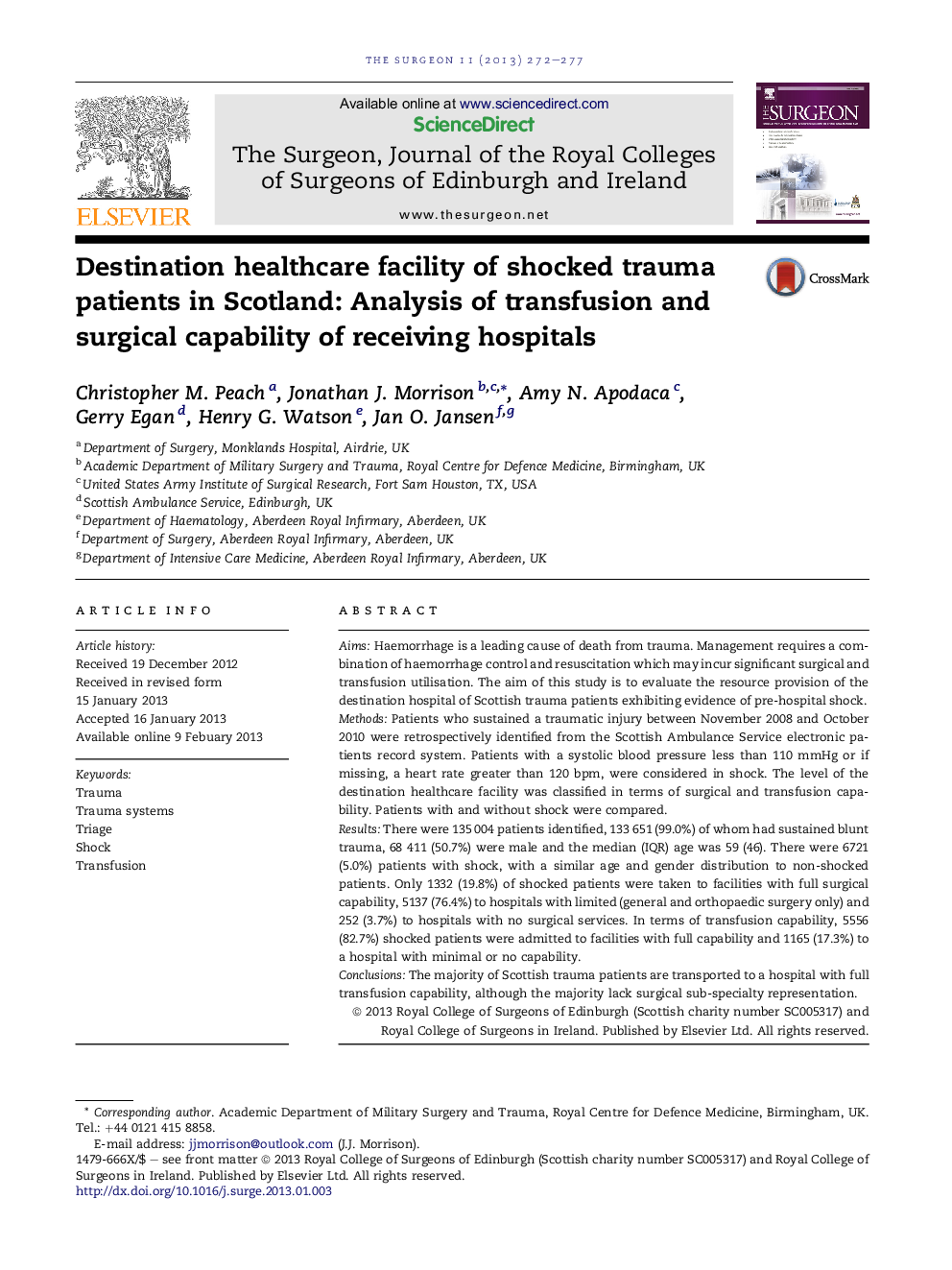| Article ID | Journal | Published Year | Pages | File Type |
|---|---|---|---|---|
| 3178535 | The Surgeon | 2013 | 6 Pages |
AimsHaemorrhage is a leading cause of death from trauma. Management requires a combination of haemorrhage control and resuscitation which may incur significant surgical and transfusion utilisation. The aim of this study is to evaluate the resource provision of the destination hospital of Scottish trauma patients exhibiting evidence of pre-hospital shock.MethodsPatients who sustained a traumatic injury between November 2008 and October 2010 were retrospectively identified from the Scottish Ambulance Service electronic patients record system. Patients with a systolic blood pressure less than 110 mmHg or if missing, a heart rate greater than 120 bpm, were considered in shock. The level of the destination healthcare facility was classified in terms of surgical and transfusion capability. Patients with and without shock were compared.ResultsThere were 135 004 patients identified, 133 651 (99.0%) of whom had sustained blunt trauma, 68 411 (50.7%) were male and the median (IQR) age was 59 (46). There were 6721 (5.0%) patients with shock, with a similar age and gender distribution to non-shocked patients. Only 1332 (19.8%) of shocked patients were taken to facilities with full surgical capability, 5137 (76.4%) to hospitals with limited (general and orthopaedic surgery only) and 252 (3.7%) to hospitals with no surgical services. In terms of transfusion capability, 5556 (82.7%) shocked patients were admitted to facilities with full capability and 1165 (17.3%) to a hospital with minimal or no capability.ConclusionsThe majority of Scottish trauma patients are transported to a hospital with full transfusion capability, although the majority lack surgical sub-specialty representation.
